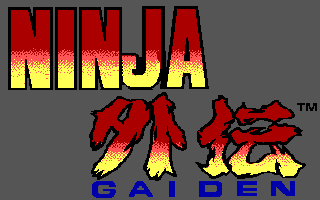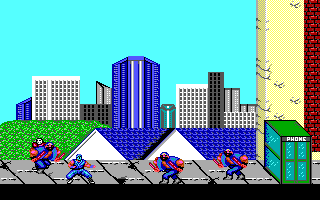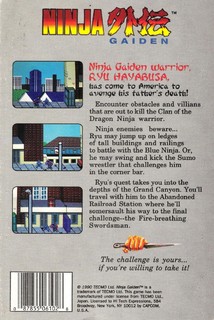Ninja Gaiden for PC DOS
PC DOSA MS-DOS port of the original Ninja Gaiden was developed by Hi Tech Expressions, this time for its release in North America as Ninja Gaiden, as opposed to the other computer versions. However, it featured stripped down play mechanics and a low 16 colour palette.
Game controls in browser
Show Controller & SystemClick on play DOS game now button first to load the game and run it inside the DOSBox emulator.
Ninja Gaiden
Online version of Ninja Gaiden for PC DOS. Ninja Gaiden, released in Japan as Ninja Ryūkenden (Legend of the Ninja Dragon Sword) and as Shadow Warriors in Europe, is a side-scrolling cinematic action-platformer. Tecmo developed and published it for the NES; its development and release coincided with the beat 'em up arcade version of the same name. The story follows a ninja named Ryu Hayabusa as he journeys to America to avenge his murdered father. There, he learns that a person named "the Jaquio" plans to take control of the world by unleashing an ancient demon through the power contained in two statues. Featuring platforming gameplay similar to Castlevania, players control Ryu through six "Acts" that comprise 20 levels; they encounter enemies that must be dispatched with Ryu's katana and other secondary weapons...
Game details
Other platforms online 7
You can play Ninja Gaiden online also in a versions for72%
rating (4 users voted)
Covers - Box Art
IBM PC with MS-DOS
Online emulated version of Ninja Gaiden was originally developed for the IBM PC and compatible computers,
with MS DOS - Microsoft Disk Operating System. It is an OS for x86-based personal computers mostly developed by Microsoft and released in 1981 as PC DOS 1.0.
MS-DOS was targeted at Intel 8086 processors running on computer hardware using floppy disks to store and access not only the operating system, but application software and user data as well.
Progressive version releases delivered support for other mass storage media in ever greater sizes and formats, along with added feature support for newer processors
and rapidly evolving computer architectures. Ultimately, it was the key product in Microsoft's development from a programming language company to a diverse software
development firm, providing the company with essential revenue and marketing resources. It was also the underlying basic operating system on which early versions of Windows ran as a GUI.




